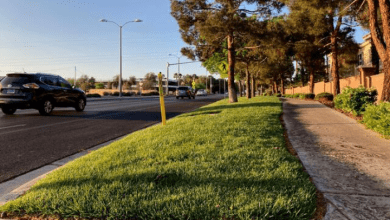
Storm sufferers in the US: We need quicker funding and fewer red tape
On Saturday, survivors of Superstorm Sandy will come together with those who were affected by Hurricanes Harvey, Irma, Maria, and Ida, as well as victim advocacy organizations from New Jersey, Florida, Texas, Louisiana, and Puerto Rico. Superstorm Sandy struck the Jersey Shore ten years ago, devastating communities throughout the northeast.
On October 29, 2012, when Sandy rushed by Robert Lukasiewicz’s residence in Atlantic City, New Jersey, he said that it sounded like “a hundred freight trains.”
The work of a second contractor came to a halt due to a shortage of cash, and contractor fraud put down his recovery attempts, according to Lukasiewicz. He said that after waiting for two years for a government help program, he eventually learned that in order to get assistance, he first required flood insurance, the cost of which had by that point increased to exorbitant levels.
I could have been home years ago if all these things had been steps rather than mistakes, he said. When the homeowners and families for whom all of this was intended are suffering, several systems are fighting and blaming one another.
Five changes, according to the survivors and their supporters, are required to prevent future storm victims from encountering the same kind of hold-ups, red tape, and financial abyss that they did: getting money into people’s hands more quickly, making sure disaster recovery systems are applied fairly, ensuring that flood insurance works for storm victims rather than against them, incorporating future storm resiliency into disaster recovery efforts, and making sure that disaster recovery is systematic rather than piecemeal.
The recommendations call for a single point of application for the various local, state, and federal assistance programs, a smaller cap on annual flood insurance premium rate increases, direct payments and health insurance for a time after the storm for storm victims, reorganizing loan repayment or aid overpayment “clawbacks” to take into account a storm survivor’s ability to pay, and paying 100% of mitigation costs up front for low-income storm victims.
The Federal Emergency Management Agency area that includes New Jersey, according to Michael Moriarty, is continually working to improve its ability to respond to storm victims.
To bring relief to individuals when their home was flooded has long been considered the Holy Grail, he added. “Since that money belongs to the taxpayers, we must exercise caution to ensure that it is utilized wisely and not merely wasted. We’re looking for a system that enables speedier alleviation.
The notion of a single application site for hurricane help, he said, is a good one, but he warned that federal privacy regulations prevent sharing information with state and local agencies unless signed releases are obtained first, which may take weeks.
Federal budget watchdogs spent eight months to assess a post-Ida assistance program that was supposed to be fast-tracked and provide applicants an answer on approval within two weeks, according to Moritarty.
Although it fell short of the first month’s objective, he noted that it was still inside the first year. That will improve over time, in my opinion.





Hmm
Gud
Yea
Good
Yh
Yi
Good
Yes
Lol
Laugh out loud
Reply
Okay
Y are you laughing
Yea
Good
Right
Awesome
Yeah
Let Americans government heip them
Good
Nice
Correct thou
Hmmm
Ok
Good
Great
Hmmm
Storm
It’s well
Yh
Good
Yeah
Okay
Nice one
God save them from the flood
Cool
Good
Good
Wow
Good
Disaster
Ok
Good
good
Hmm
Hmmm
It’s everywhere
Hmm
For what
Good
Good
For what
It is well
Amen
It sha be well
Good
Hmmmm
Sorry ooh
Ok
Alright
Good
Good
Nicely said
Good
Ok
Good opinion
Very good
God help
Amen
Good luck
👍👍
Great idea
Cool
Cool
Impressive
Good
Haaaa
Mctwwweee
Sorry about that
Good
Hmmm,,it is well ooo
That will improve over time
Very well
Nice
Good
Goodluck
Great
Great
Help th
Cool
Cool helpful
Storm suffer in us
Yes o
Okay
According to Michael, Federal budget watchdogs spent eight months to assess a post-Ida assistance program that was supposed to be fast-tracked and provide applicants an answer on approval within two weeks
Hmmm
Hmmmm
God help
It is well
Good
It is well
It is well.
It’s okay
too bad
Good
Too bad
Alright
Good luck
It’s well
Nice
Not too bad
Cool
Feeling sad
Cool
Storm
H
Yea
Hmm
I hope more assistance are rendered
Interesting
It’s okay
Good
Happy
Hope
Great
Normal
Hope
Ohh
May GOD help us overcome natural disaster
God save us
Help us lord
God help us all
Wonderful news
Good
Oh my goodness
Okk
Good
Good idea
Nice
Government should see to this and mercy on the masses
The government are trying
Okay
Yes
Yes
Good
Good
Good
Good luck
Seen
Hmmmm
This flood of a thing is more likely to be happening all over the world 😰
Okay
Good
Something should be done about it before it gets out of control
Action must be taking
Okay
Good
Natural desater is not an eazy thing to face urgent help should be rendered ASAP
Good idear
They should
Okay
Very good
Ok
Hmm
Sad
Yes
Impressive
Nice
Wow
Thanks for the update
Good update
This is really bad
Good
Good okay
Yes
Pure
Cool
Okay
Alright
If the government can do better..then they should
Hmmmmm
God help
Like
Sure
Said
Okay
Okay
Wow
Sad
See hmm
Help them
Yes
Hmmmm
Okay
Wonderful
On God we trust
God, please come
Good
Good
Kk
Oh my God
Damn
Nice one
Good
Okay
Gud
Yes
Yes
Great thought
Wow
Great
Wiw
Agree
Good
Wow
Ok
Good
Nice
Tear
Gud
Good
Nawawo
Ok
Ok
Nawaooo
Good
Good
God helps us all
Good
Nice
😌
Ok
Ok
God will help you
Ok
Okay
Right
Good
Okay
Nice
Nice
Good
Hmm
Okay
Hmmm na so
WOW
Okay
Nice
It’s a pity
So sorry